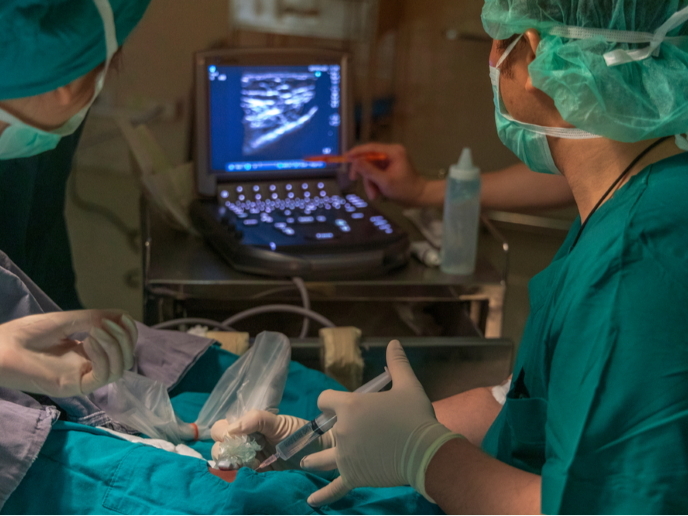Hands-free: using magnets to steer flexible needles through the body
Minimally invasive techniques such as biopsy, laparoscopy and endoscopy have made it possible to perform surgical procedures through small or no incisions, offering less haemorrhaging and faster patient recovery. Yet challenges remain when surgery is needed on areas of the body that are more difficult to access. One solution being explored by the EU-funded ROBOTAR project is to use flexible instruments that can snake around tissues and organs, steered by magnetic coils. “The basic idea is we want to perform minimally invasive surgery in an even less invasive way,” says project coordinator Sarthak Misra, a professor of Surgical Robotics.
New paths
Working at the University of Twente in the Netherlands, Misra and his team developed the conceptual framework for a system of steerable needles to deliver drugs or nanobodies to diseased tissues in inaccessible parts of the body. “The application area is broad – anywhere that’s a challenge to reach, such as the gastrointestinal tract, the brain, the heart, all these generally involve traumatic surgery,” explains Misra. Using a magnetic field to steer the instrument allows it to be miniaturised, as there are no longer any cables or tendons in the device. The instrument’s position is monitored using ultrasound – a commonly available piece of equipment in clinical settings – and the steering itself performed remotely by a surgeon, assisted by computational models, clinical images and advanced planning techniques. The entire system is portable enough to be carried in and out of the operating theatre as needed. To develop the system, Misra and his team first designed patient-specific plans, modelling the path a needle would need to be threaded through the soft tissue to perform a treatment. The next stages involved developing prototypes of the steering controller, the flexible magnetic needle and the ultrasound monitoring system. Finally the whole system was put together. “We have several versions of prototypes in lab, and there were intermediate results,” adds Misra. These resulted in two proof of concept grants. The first, INSPIRE, examines how the 3D structure of the instrument can be resolved using fibre optic sensors. The second, RAMSES, seeks to develop the electromagnetic coils that will guide the instrument.
Robot surgeons
Misra previously worked on space robotics, including the Canadarm2 and Dexter robots on board the International Space Station. He is now bringing that expertise to more down-to-Earth challenges. “I feel the future is that many surgical techniques such as these will be done robotically,” he notes. “The final judgement call will always be with the clinician, but some steering techniques require a lot of hand-eye coordination, and it’s hard for a clinician to do this and perform a diagnosis at the same time.” The work was supported by the European Research Council. “When I started talking about this, it sounded outlandish,” remarks Misra. “It’s a big idea, a high-risk problem, but potentially with a high reward for patient and clinicians. The ERC is really the only way a project like this can be supported.” As well as the proof of concept grants, Misra is continuing to develop concepts around ROBOTAR through the MAESTRO project, supported by an ERC Consolidator Grant, which will investigate the potential of injectable robots steered by magnetic fields and acoustic waves.
Keywords
ROBOTAR, robot, instrument, magnetic coil, ultrasound, surgery, flexible, laparoscopy, acoustic wave, nanobot

